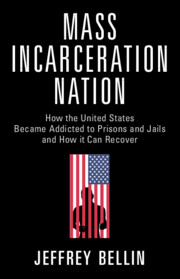 Mass Incarceration Nation
Mass Incarceration Nation from Part III - The Mechanics of Mass Incarceration
Published online by Cambridge University Press: 03 November 2022
After making an arrest, a police officer typically refers the matter to the local prosecutor’s office. Once presented with a case, that office decides whether to charge the defendant with a crime and, if so, which crime(s). Even if prosecutors initially file a charge, they can still dismiss the case later on. If prosecutors do not dismiss the case, they can seek an informal resolution (often called “diversion”), negotiate a plea bargain on behalf of the government, or take the case to trial. These decisions about which cases to prosecute, and how, are important contributors to the incarceration rate. As this chapter explains, over the era of Mass Incarceration, prosecutors’ primary contribution was to follow the lead of police and legislators. Prosecutors applied the new tools enacted by legislators leading to more severe punishments for crimes generally. And, perhaps most importantly, they uncritically accepted the new mix of arrests forwarded to them by police, flooding the courts with a higher proportion of cases that were easy to prove and punish.
To save this book to your Kindle, first ensure [email protected] is added to your Approved Personal Document E-mail List under your Personal Document Settings on the Manage Your Content and Devices page of your Amazon account. Then enter the ‘name’ part of your Kindle email address below. Find out more about saving to your Kindle.
Note you can select to save to either the @free.kindle.com or @kindle.com variations. ‘@free.kindle.com’ emails are free but can only be saved to your device when it is connected to wi-fi. ‘@kindle.com’ emails can be delivered even when you are not connected to wi-fi, but note that service fees apply.
Find out more about the Kindle Personal Document Service.
To save content items to your account, please confirm that you agree to abide by our usage policies. If this is the first time you use this feature, you will be asked to authorise Cambridge Core to connect with your account. Find out more about saving content to Dropbox.
To save content items to your account, please confirm that you agree to abide by our usage policies. If this is the first time you use this feature, you will be asked to authorise Cambridge Core to connect with your account. Find out more about saving content to Google Drive.